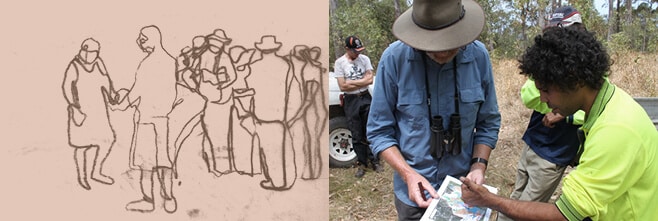The NSW government’s bushfire inquiry final report was released on Tuesday 25 August. The report was flush with recommendations, 76 in total, all of which were accepted by the NSW government.
Most of the recommendations addressed ways of doing what we already do better. For instance, there were recommendations for addressing very basic as yet unmet needs, like protective equipment for all RFS volunteers and proper fire-proofing and tech fit-outs for all trucks. Councils will be trained in managing evacuation centres, and better efforts will be made to fire-proof the road and telecommunications networks.
There was also a call to make NSW a major centre in bushfire research, including fire dynamics and the health impacts of bushfire smoke. A Bush Fire Technology Fund will be set up, modelled on the Medical Devices Fund.
All of this was expected and necessary. But a welcome surprise was the way the report addressed climate change and indigenous land management.
In particular, the government committed “to pursuing a greater application of Aboriginal land management, including cultural burning, through a program to be coordinated by Aboriginal Affairs and Department of Planning, Industry and Environment working in partnership with Aboriginal communities.”
This is in a context of acknowledgement that hazard reduction burning needs to be done better. The inquiry noted that this burning “appears to have reduced fire severity in some instances, but in others appears to have had no effect.”
The report noted that “conflicting evidence was presented to the inquiry” about burning. The indigenous-run Firesticks Alliance argued that “hazard reduction burns are too hot for the landscape, and over time actually increase forest flammability by preferencing particular plant species.”

Similarly, Professor David Bowman pointed out that traditional Aboriginal land management is “characterised by highly patchy landscape burning, whereas what he calls ‘industrial’ prescribed burning typically treats large blocks of the landscape.” The inquiry supported the call for “landscape scale” experiments with these different techniques.
The inquiry was also refreshingly realistic on climate change, which it said “clearly played a role in the conditions that led up to the fire.” It also suggested feasibility studies on “facilitating shift of high conservation value rainforest vegetation communities further south as climatic conditions change.” This is a reference to the Gondwana Rainforests, a World Heritage site much of which burned for the first time in 2019-20.
Following these heartening recommendations, we’ll be keeping our eye on what steps the NSW government actually puts in place in the year to come.